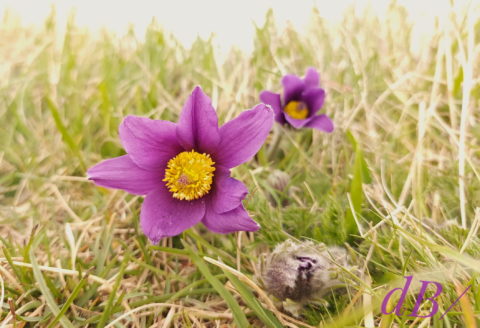We took a walk along the Devil’s Dyke hoping to see Green Hairstreaks and perhaps the Dotterals that had been sighted on neighbouring Ditch Farm. We had no luck with either of those, although there were lots of Brimstone butterflies, a few Whitethroats, and our first Willow Warbler of the year.
Almost in passing we noticed a pretty purple flower with a yellow centre. Mrs Sciencebase suggested it might be some kind of anemone and it is indeed in the same sub-family, Ranunculoideae, but it is specifically Pulsatilla vulgaris, known colloquially as the European Pasque Flower. Pasque from the Hebrew word for Passover, Pasakh. Obviously, quite apt for this time of year.

The plant is also known as the wind flower, prairie crocus, Easter flower, and meadow anemone. The showy purple parts are sepals rather than petal. It’s a scarce plant that likes chalky or limestone-rich land. Happily, the very substance of the raised earthworks that is Devil’s Dyke is a good proportion of chalk. It is also the ‘county flower’ of Cambridgeshire and neighbouring Hertfordshire. Pulsatilla species are toxic and can cause vomiting and diarrhoea if ingested and in serious cases of poisoning, convulsions, a critical drop in blood pressure, and coma.
Thanks to Twitter friends for the ID, one, to my chagrin, I did not know.
Counted 11 hares on adjacent farmland, lots of cowslips, lots of Brimstone butterfly, one or two Small Tortoiseshell, half a dozen European Peacock and lots of the same beige moth (perhaps a caddisfly?)